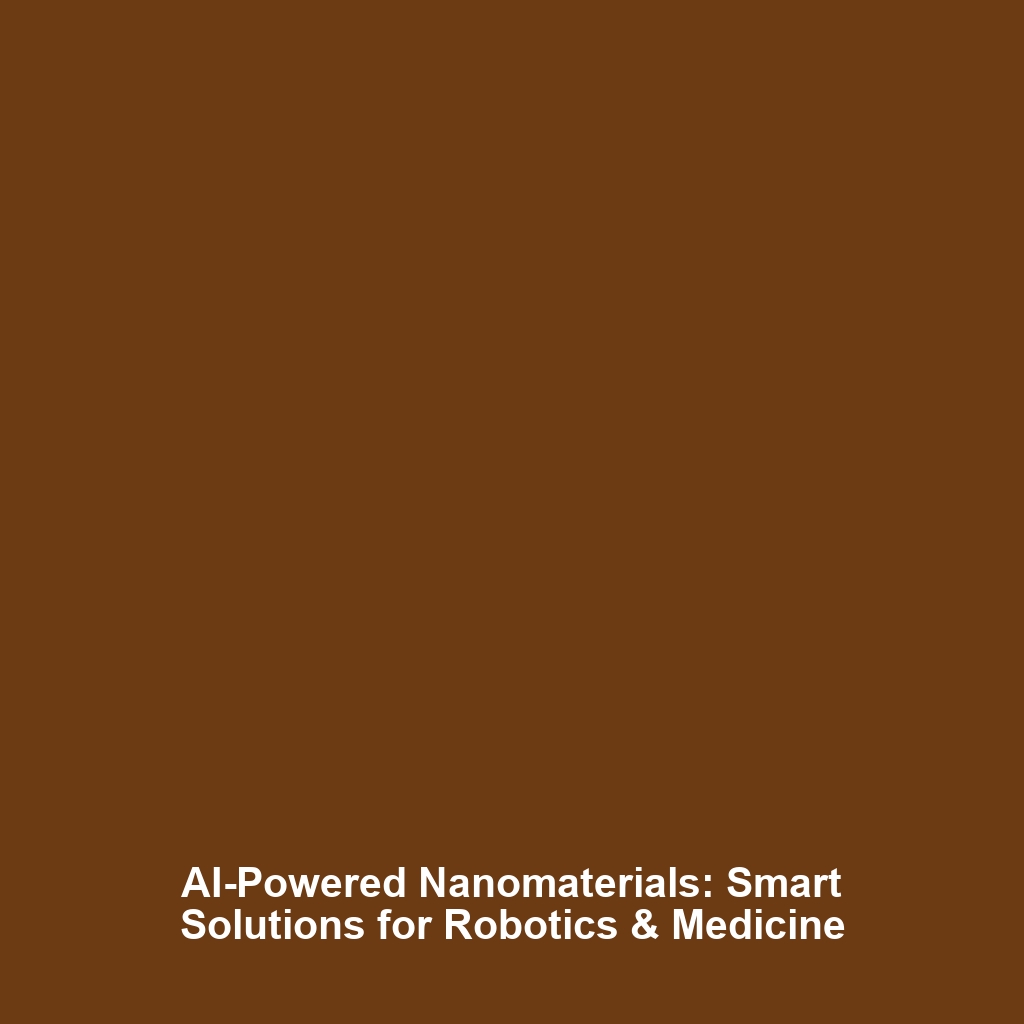AI-Driven Nanomaterials: Revolutionary Advances in Robotics and Medicine
Introduction
The emergence of AI-driven nanomaterials represents a significant evolution in the field of Advanced Nanomaterials, with profound implications for robotics and medicine. These innovative materials have the unique ability to respond to environmental stimuli and adapt their properties in real-time, leading to enhanced functionality and versatility. As researchers delve into this frontier, the intersection of artificial intelligence and nanomaterials is poised to revolutionize various industries, making it critical to explore the potential applications and challenges associated with this technology.
Key Concepts
Understanding AI-Driven Nanomaterials
AI-driven nanomaterials combine the principles of nanotechnology and artificial intelligence to create materials that can autonomously adjust their properties based on surrounding conditions. Key concepts include:
- Stimuli-Responsive Materials: Materials designed to react to changes in temperature, pH, light, or biochemical signals.
- Machine Learning Algorithms: Algorithms that enhance the material’s performance by learning from data and predicting necessary adaptations.
- Real-Time Adaptation: The ability to modify material properties instantaneously, which can be crucial in dynamic environments.
Integration into Advanced Nanomaterials
These AI-driven materials fit seamlessly into the category of Advanced Nanomaterials, characterized by their nanoscale dimensions and engineered properties. As these technologies evolve, their integration into practical applications will reshape numerous sectors.
Applications and Real-World Uses
The applicability of AI-driven nanomaterials spans a wide array of fields, particularly in robotics and medicine. Key applications include:
- Biomedical Devices: Smart drug delivery systems that release therapeutics in response to specific physiological triggers.
- Wearable Technology: Devices that adapt to environmental changes, enhancing user experience and performance.
- Robotic Systems: Nanomaterials that allow robots to modify their properties, improving functionality and efficiency in unpredictable environments.
Current Challenges
Despite their promise, the study and application of AI-driven nanomaterials face several challenges:
- Scalability: Developing methods for large-scale production without compromising quality.
- Regulatory Issues: Navigating the complex landscape of regulations governing new technologies in medicine and robotics.
- Material Durability: Ensuring that materials maintain their adaptive capabilities over time and under different conditions.
Future Research and Innovations
Looking ahead, the research on AI-driven nanomaterials is likely to uncover a multitude of innovations. Future investigations may focus on:
- Hybrid Systems: Integrating AI with other technologies such as robotics and biotechnology for multifaceted applications.
- Enhanced Machine Learning: Innovations in algorithms to improve adaptability and predictive modeling.
- Sustainability: Developing eco-friendly materials while reducing waste and enhancing recyclability.
Conclusion
In summary, AI-driven nanomaterials hold remarkable potential to transform industries, particularly in robotics and medicine. As researchers continue to explore their capabilities and tackle existing challenges, the future of Advanced Nanomaterials looks promising. For further exploration of this exciting field, consider looking into advanced applications of nanomaterials or the latest research in nanotechnology.

